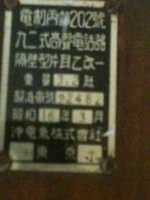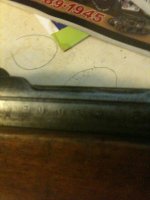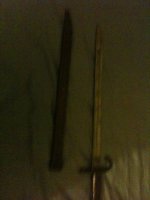I recently got a type 99 Arisaka from my local gun store but this one is different than any I have ever seen and that is a lot of them over the years. This is my question to any knowledgeable collectors of this rifle. Mine has the Mum intact a matching bayonet but this is where I can't find any info there is a small metal plaque on the side of the stock of course it's in Japanese so I don't know what it says but there is an anchor on the plaque so I'm assuming it's a Naval or Marine symbol. This gun was a bring back but the paper work was lost at some point. The gun shop owner who is a friend of mine said it was brought in by an elderly woman whose husband had been a marine in WW2. I would post pictures but I’m at work.Thanks for any help you can provide.
Last edited:



